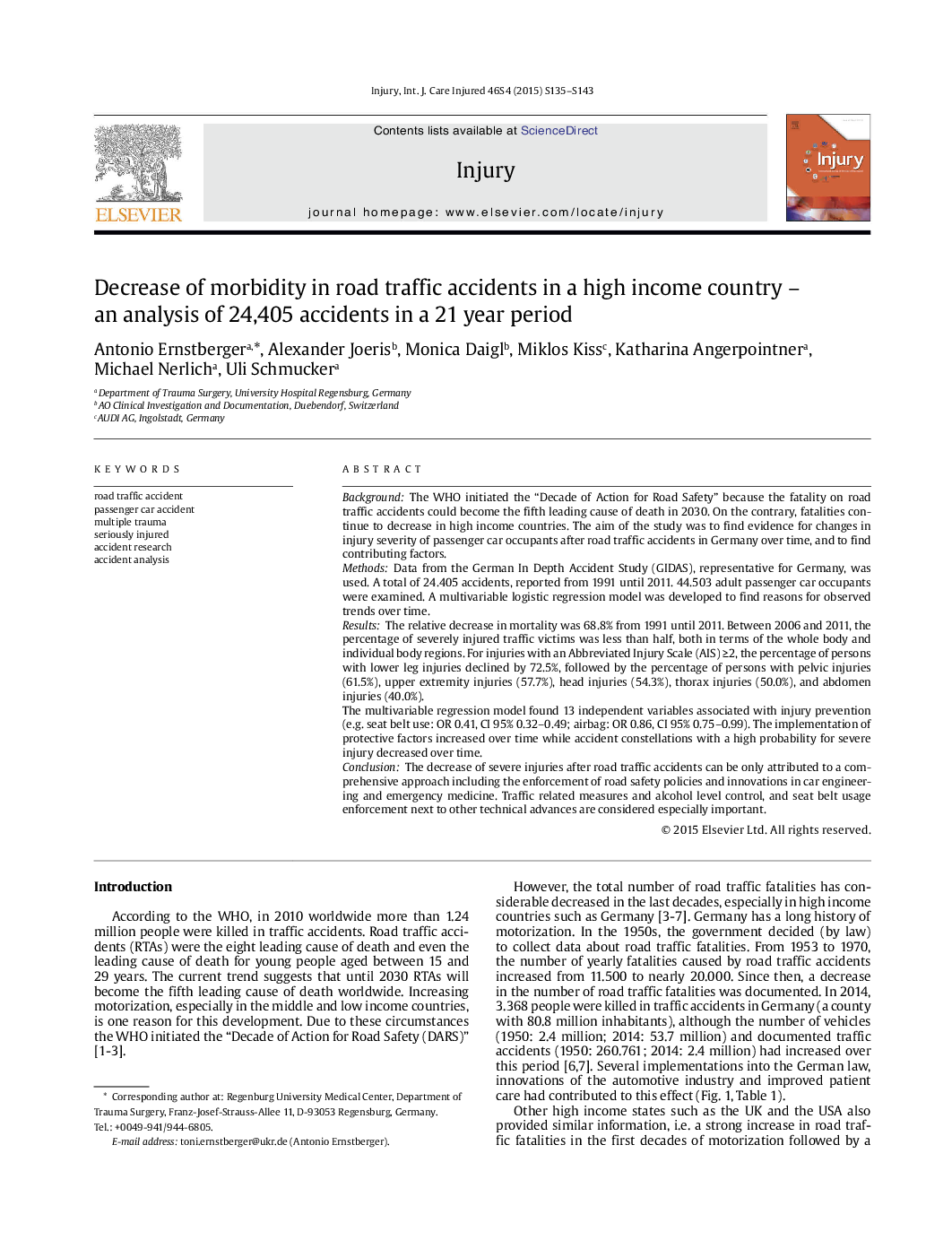| Article ID | Journal | Published Year | Pages | File Type |
|---|---|---|---|---|
| 3239366 | Injury | 2015 | 9 Pages |
BackgroundThe WHO initiated the “Decade of Action for Road Safety” because the fatality on road traffic accidents could become the fifth leading cause of death in 2030. On the contrary, fatalities continue to decrease in high income countries. The aim of the study was to find evidence for changes in injury severity of passenger car occupants after road traffic accidents in Germany over time, and to find contributing factors.MethodsData from the German In Depth Accident Study (GIDAS), representative for Germany, was used. A total of 24.405 accidents, reported from 1991 until 2011. 44.503 adult passenger car occupants were examined. A multivariable logistic regression model was developed to find reasons for observed trends over time.ResultsThe relative decrease in mortality was 68.8% from 1991 until 2011. Between 2006 and 2011, the percentage of severely injured traffic victims was less than half, both in terms of the whole body and individual body regions. For injuries with an Abbreviated Injury Scale (AIS) ≥2, the percentage of persons with lower leg injuries declined by 72.5%, followed by the percentage of persons with pelvic injuries (61.5%), upper extremity injuries (57.7%), head injuries (54.3%), thorax injuries (50.0%), and abdomen injuries (40.0%).The multivariable regression model found 13 independent variables associated with injury prevention (e.g. seat belt use: OR 0.41, CI 95% 0.32–0.49; airbag: OR 0.86, CI 95% 0.75–0.99). The implementation of protective factors increased over time while accident constellations with a high probability for severe injury decreased over time.ConclusionThe decrease of severe injuries after road traffic accidents can be only attributed to a comprehensive approach including the enforcement of road safety policies and innovations in car engineering and emergency medicine. Traffic related measures and alcohol level control, and seat belt usage enforcement next to other technical advances are considered especially important.
